Abstract
Knowledge of the total and regional lung retention of particles inhaled continuously by man over long periods can be useful in understanding the potential role of inhaled particles in the pathogenesis of lung diseases. Owing to practical and ethical considerations, however, little or no experimental information exists. A mathematical model of particle retention simulating environmental and occupational exposures has therefore been developed that takes into account particle deposition, tracheobronchial clearance, and two phases of alveolar clearance in the Weibel A anatomical lung model. The derived equations of retention kinetics predict retention of particles as a function of exposure time. For a continuous exposure (simulating environmental conditions) to 4 microns particles, the model predicts that retained particles approach an equilibrium between deposited and cleared particles with the 95% level being reached in 293 days. For an intermittent exposure (simulating occupational conditions) equilibrium is approached in five years. The whole lung burden of particles is predicted to be 9% of the total mass that entered the lung after a one-year environmental exposure and 1.5% after a 25-year occupational exposure. The equilibrium surface concentration and integrated dose of particles per airway generation predict enhanced risk to the pathogenic effects of inhaled particles in the large airways and respiratory bronchioles.
Full text
PDF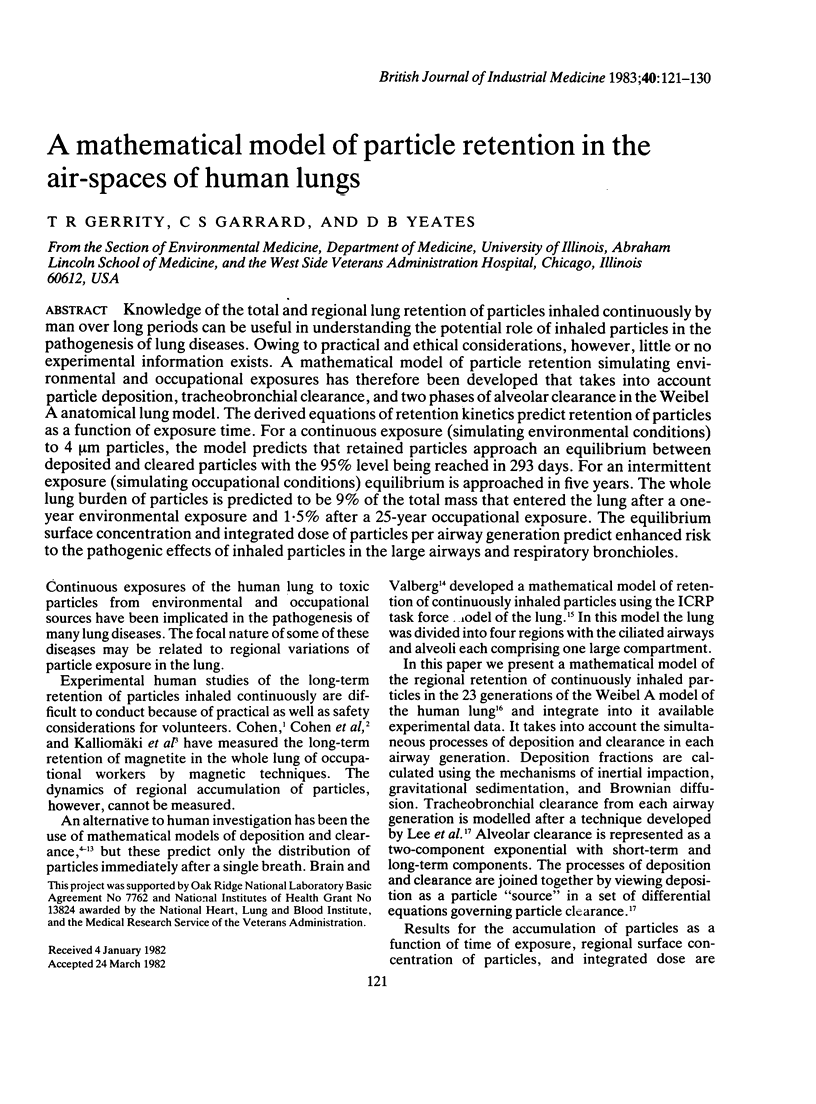
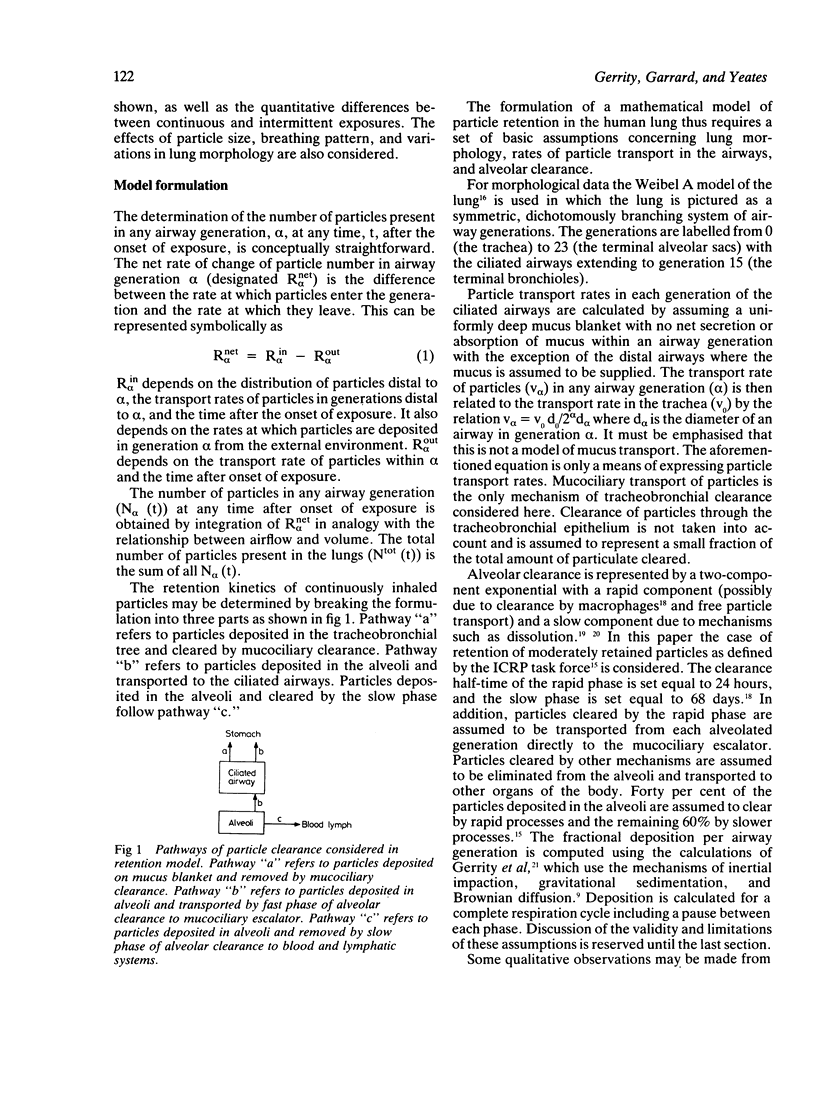
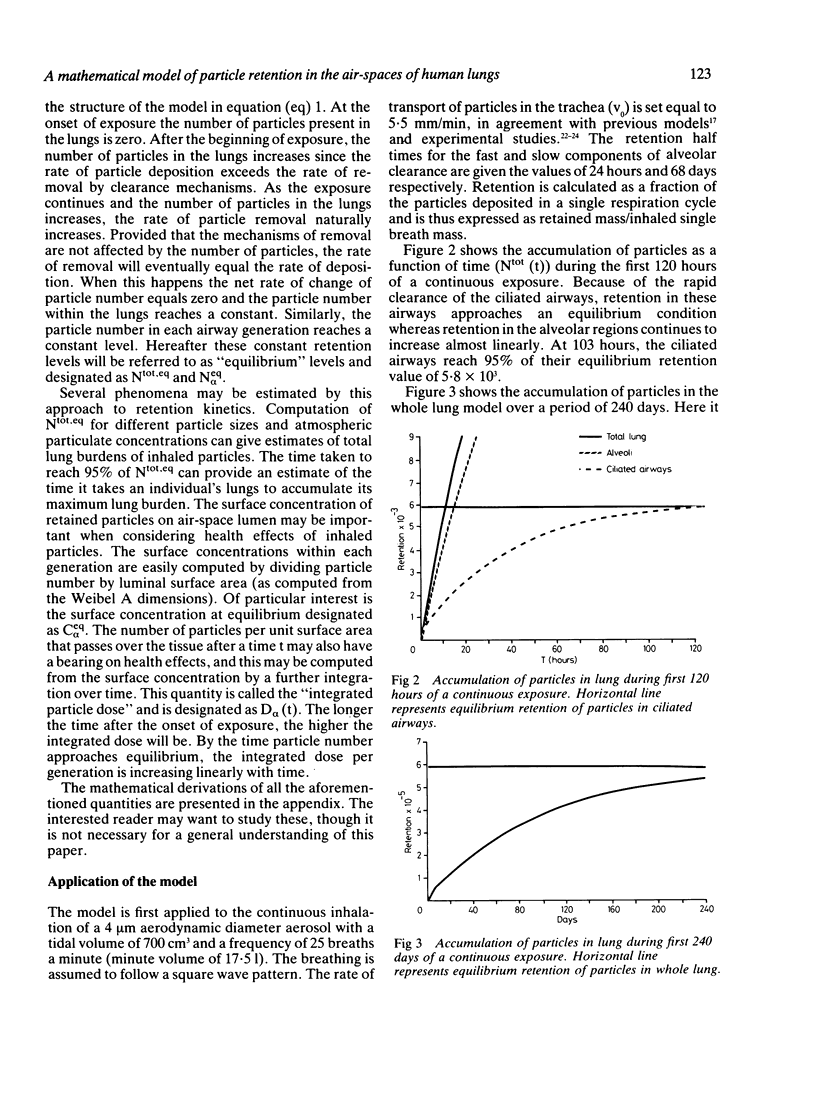
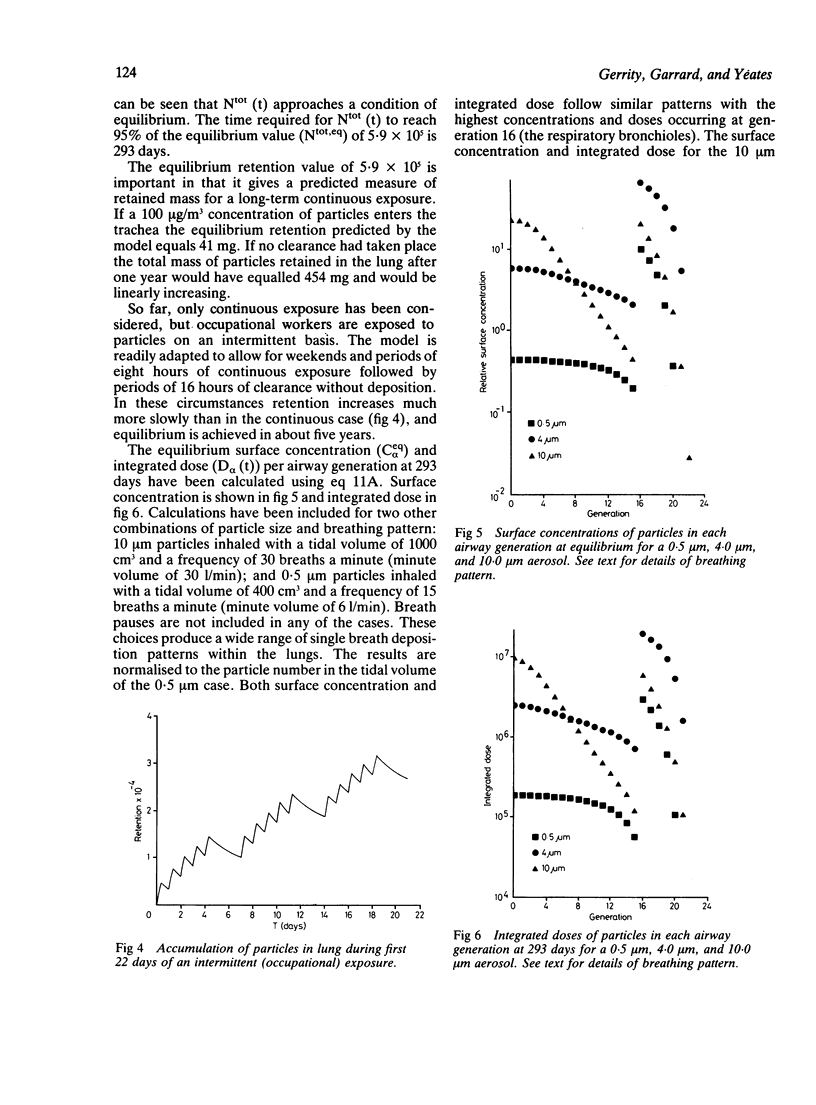
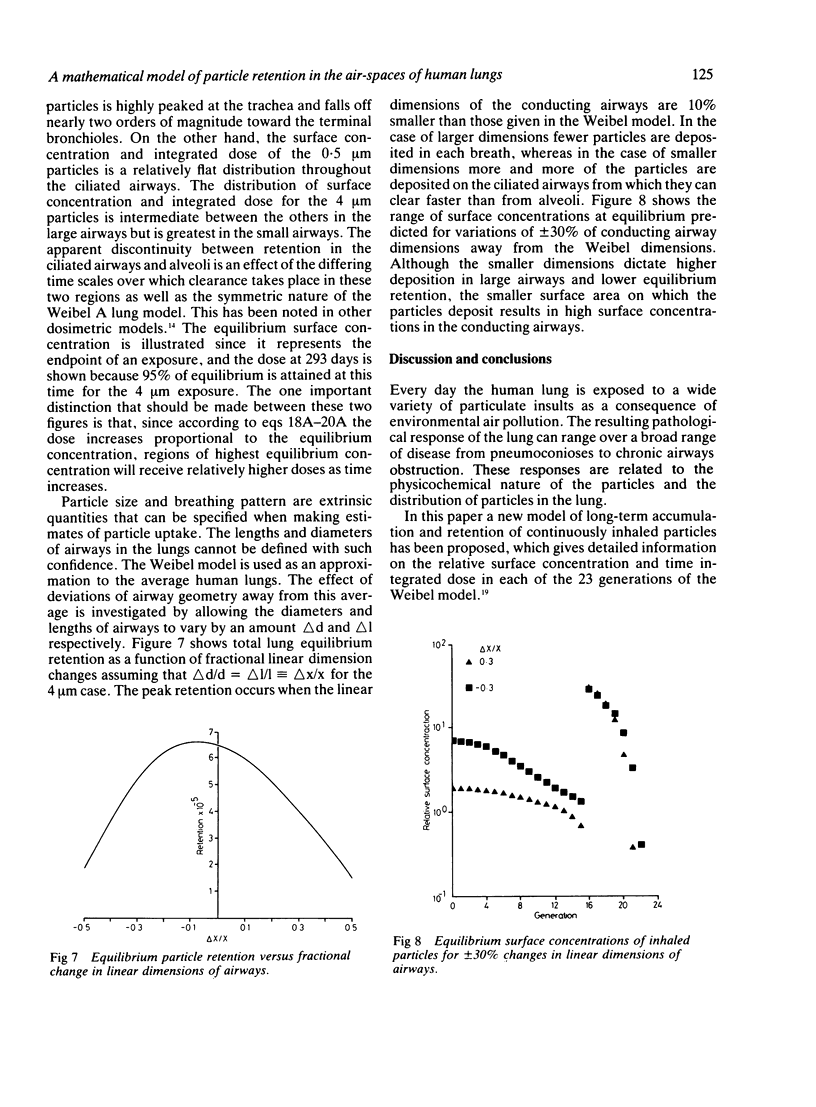
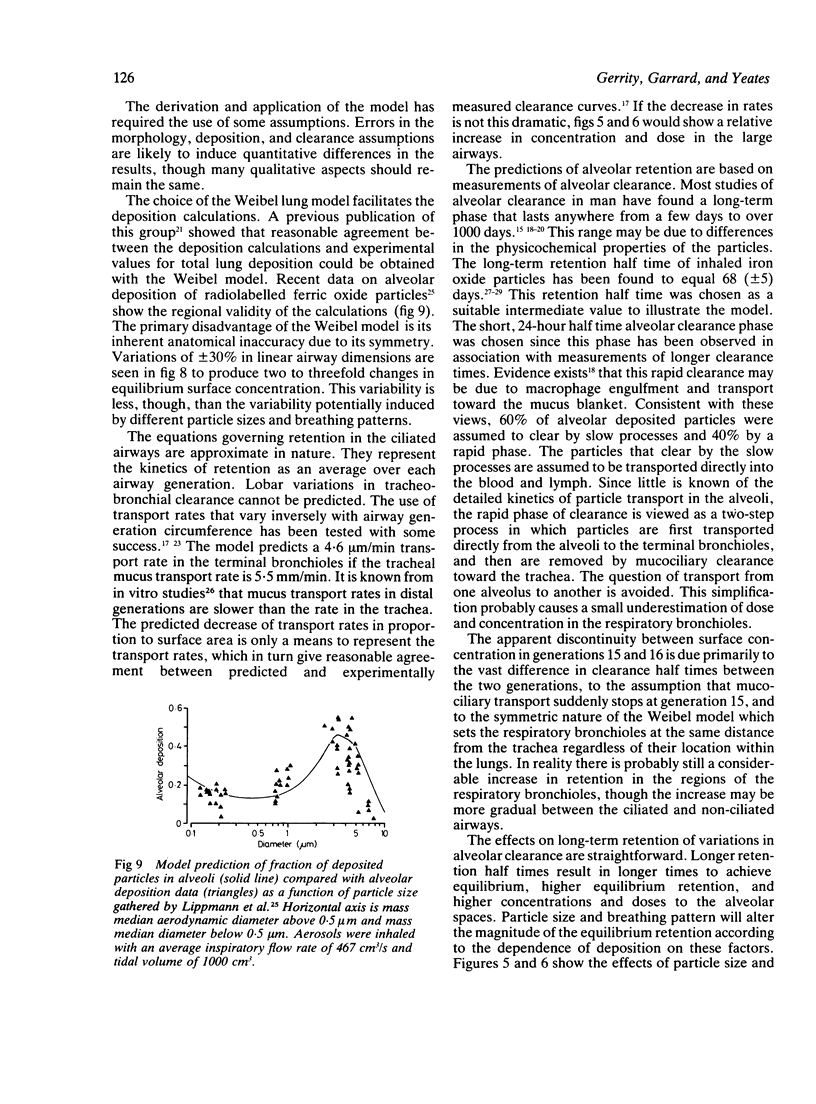
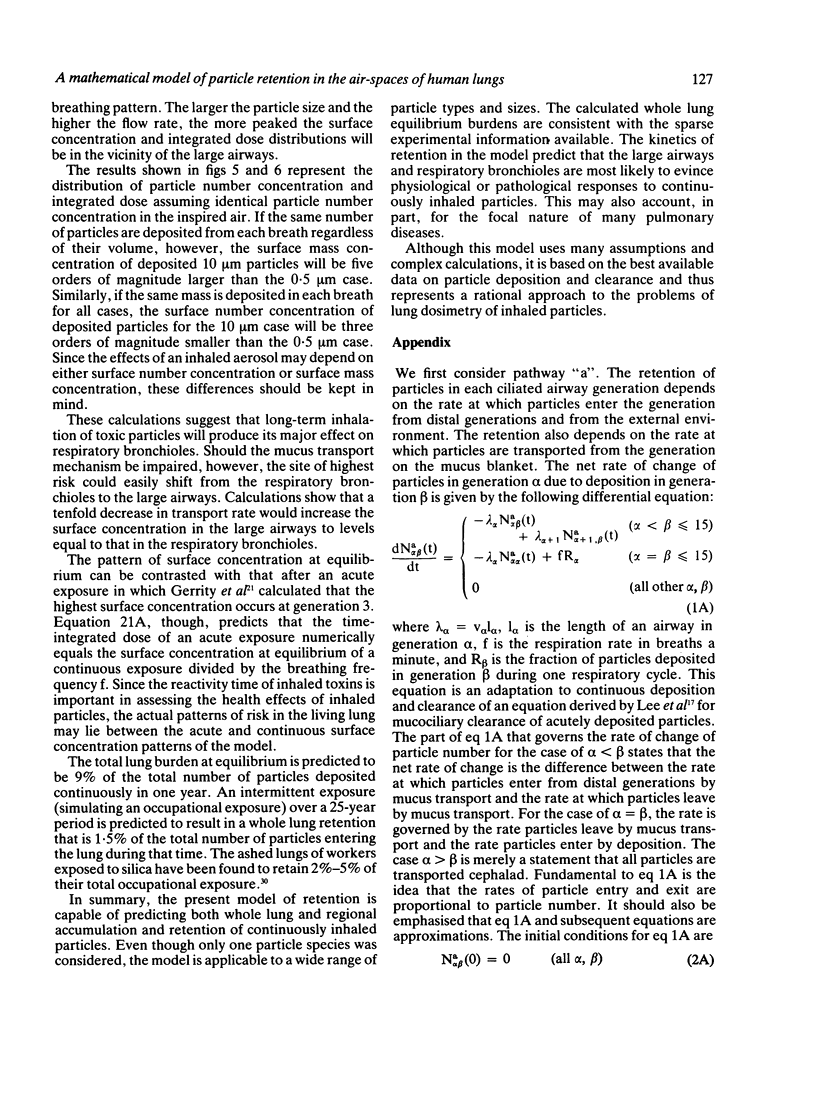

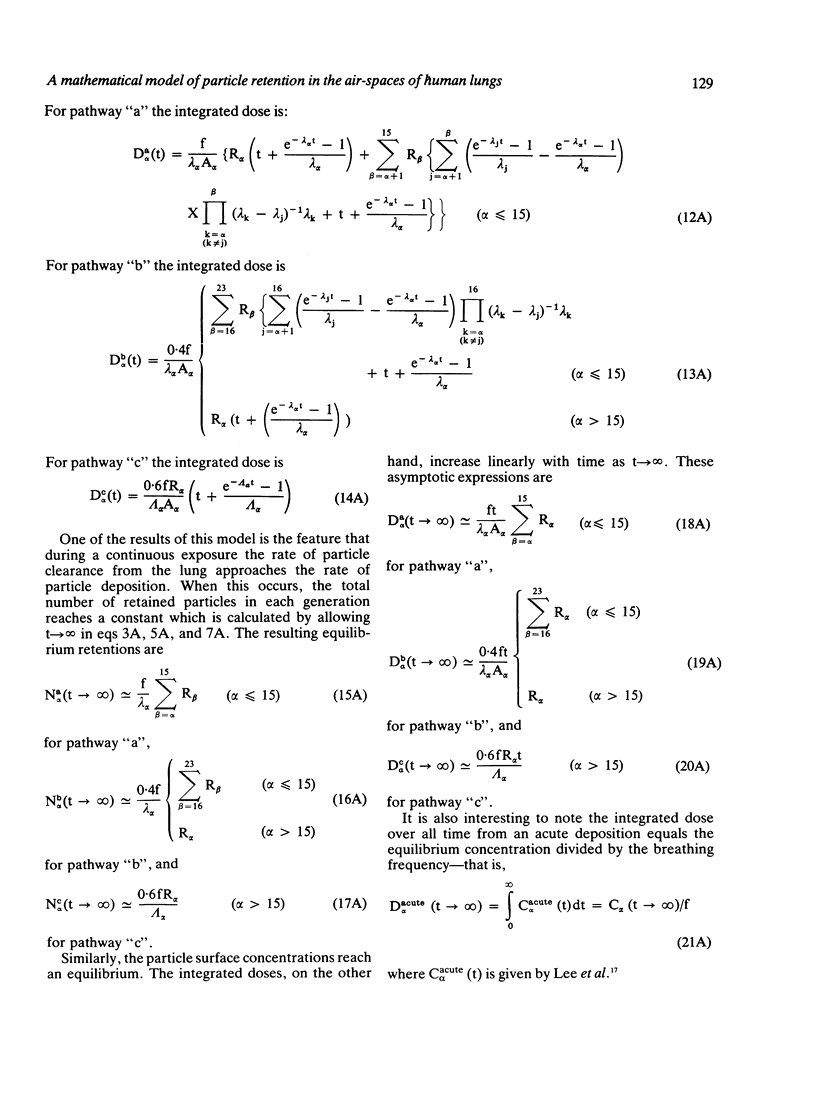
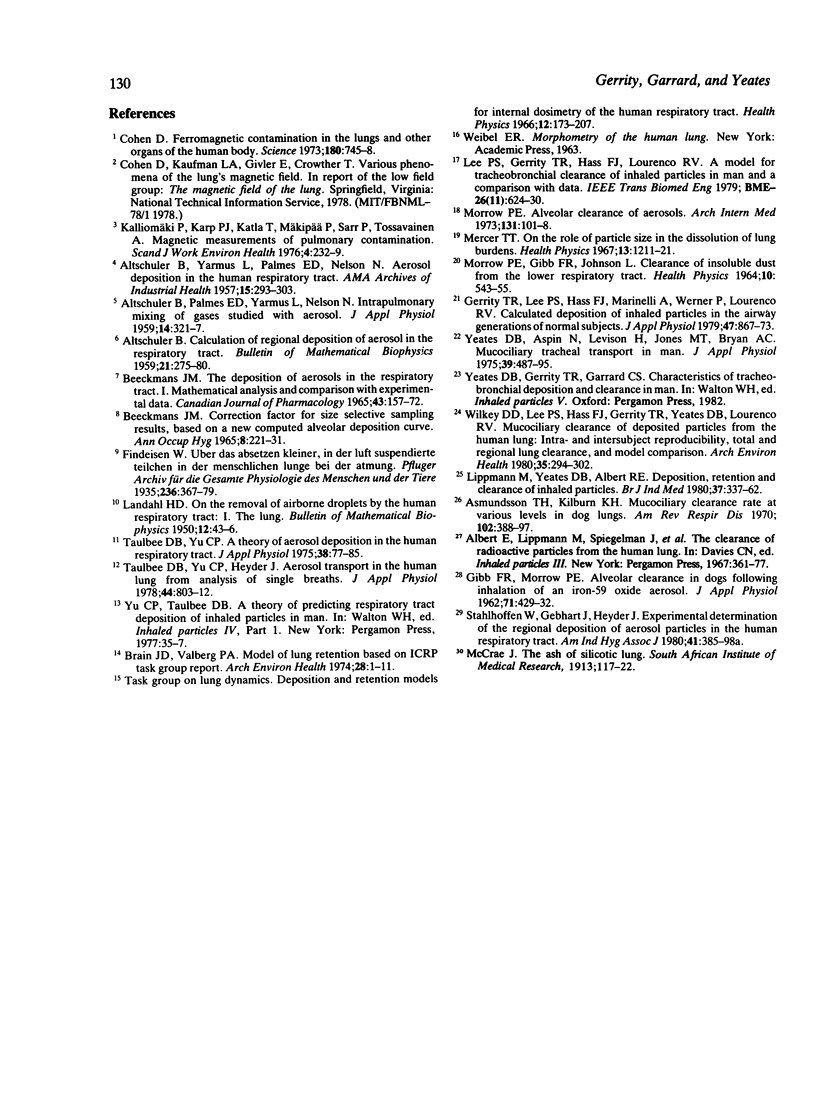
Selected References
These references are in PubMed. This may not be the complete list of references from this article.
- ALTSHULER B., PALMES E. D., YARMUS L., NELSON N. Intrapulmonary mixing of gases studied with aerosols. J Appl Physiol. 1959 May;14(3):321–327. doi: 10.1152/jappl.1959.14.3.321. [DOI] [PubMed] [Google Scholar]
- ALTSHULER B., YARMUS L., PALMES E. D., NELSON N. Aerosol deposition in the human respiratory tract. I. Experimental procedures and total deposition. AMA Arch Ind Health. 1957 Apr;15(4):293–303. [PubMed] [Google Scholar]
- Asmundsson T., Kilburn K. H. Mucociliary clearance rates at various levels in dog lungs. Am Rev Respir Dis. 1970 Sep;102(3):388–397. doi: 10.1164/arrd.1970.102.3.388. [DOI] [PubMed] [Google Scholar]
- BEECKMANS J. M. CORRECTION FACTOR FOR SIZE-SELECTIVE SAMPLING RESULTS, BASED ON A NEW COMPUTED ALVEOLAR DEPOSITION CURVE. Ann Occup Hyg. 1965 Jul;8:221–231. doi: 10.1093/annhyg/8.3.221. [DOI] [PubMed] [Google Scholar]
- Brain J. D., Valberg P. A. Models of lung retention based on ICRP task group report. Arch Environ Health. 1974 Jan;28(1):1–11. doi: 10.1080/00039896.1974.10666424. [DOI] [PubMed] [Google Scholar]
- Cohen D. Ferromagnetic contamination in the lungs and other organs of the human body. Science. 1973 May 18;180(4087):745–748. doi: 10.1126/science.180.4087.745. [DOI] [PubMed] [Google Scholar]
- GIBB F. R., MORROW P. E. Alveolar clearance in dogs after inhalation of an iron 59 oxide aerosol. J Appl Physiol. 1962 May;17:429–432. doi: 10.1152/jappl.1962.17.3.429. [DOI] [PubMed] [Google Scholar]
- Gerrity T. R., Lee P. S., Hass F. J., Marinelli A., Werner P., Lourenço R. V. Calculated deposition of inhaled particles in the airway generations of normal subjects. J Appl Physiol Respir Environ Exerc Physiol. 1979 Oct;47(4):867–873. doi: 10.1152/jappl.1979.47.4.867. [DOI] [PubMed] [Google Scholar]
- Kalliomäki P. L., Karp P. J., Katila T., Makipä P., Saar P., Tossavainen A. Magnetic measurements of pulmonary contamination. Scand J Work Environ Health. 1976 Dec;2(4):232–239. doi: 10.5271/sjweh.2799. [DOI] [PubMed] [Google Scholar]
- Lee P. S., Gerrity T. R., Hass F. J., Lourenco R. V. A model for tracheobronchial clearance of inhaled particles in man and a comparison with data. IEEE Trans Biomed Eng. 1979 Nov;26(11):624–630. doi: 10.1109/tbme.1979.326544. [DOI] [PubMed] [Google Scholar]
- Lippmann M., Yeates D. B., Albert R. E. Deposition, retention, and clearance of inhaled particles. Br J Ind Med. 1980 Nov;37(4):337–362. doi: 10.1136/oem.37.4.337. [DOI] [PMC free article] [PubMed] [Google Scholar]
- MORROW P. E., GIBB F. R., JOHNSON L. CLEARANCE OF INSOLUBLE DUST FROM THE LOWER RESPIRATORY TRACT. Health Phys. 1964 Aug;10:543–555. doi: 10.1097/00004032-196408000-00003. [DOI] [PubMed] [Google Scholar]
- Mercer T. T. On the role of particle size in the dissolution of lung burdens. Health Phys. 1967 Nov;13(11):1211–1221. doi: 10.1097/00004032-196711000-00005. [DOI] [PubMed] [Google Scholar]
- Morrow P. E. Alveolar clearance of aerosols. Arch Intern Med. 1973 Jan;131(1):101–108. [PubMed] [Google Scholar]
- Stahlhofen W., Gebhart J., Heyder J. Experimental determination of the regional deposition of aerosol particles in the human respiratory tract. Am Ind Hyg Assoc J. 1980 Jun;41(6):385–98a. doi: 10.1080/15298668091424933. [DOI] [PubMed] [Google Scholar]
- Taulbee D. B., Yu C. P. A theory of aerosol deposition in the human respiratory tract. J Appl Physiol. 1975 Jan;38(1):77–85. doi: 10.1152/jappl.1975.38.1.77. [DOI] [PubMed] [Google Scholar]
- Taulbee D. B., Yu C. P., Heyder J. Aerosol transport in the human lung from analysis of single breaths. J Appl Physiol Respir Environ Exerc Physiol. 1978 May;44(5):803–812. doi: 10.1152/jappl.1978.44.5.803. [DOI] [PubMed] [Google Scholar]
- Wilkey D. D., Lee P. S., Hass F. J., Gerrity T. R., Yeates D. B., Lourenco R. V. Mucociliary clearance of deposited particles from the human lung: intra- and inter-subject reproductivity, total and regional lung clearance, and model comparisons. Arch Environ Health. 1980 Sep-Oct;35(5):294–303. [PubMed] [Google Scholar]
- Yeates D. B., Aspin N., Levison H., Jones M. T., Bryan A. C. Mucociliary tracheal transport rates in man. J Appl Physiol. 1975 Sep;39(3):487–495. doi: 10.1152/jappl.1975.39.3.487. [DOI] [PubMed] [Google Scholar]


